Growing containerised poplar nursery stock - first year results
By Dean Satchell, Northland Regional Council, January 2023.

Acknowledgements: Many thanks to the MPI Hill Country Erosion Programme for supporting Northland Regional Council to achieve improved soil conservation outcomes and build our technical capacity.
Introduction
Poplar cuttings can be easily grown in containers, offering the opportunity for a plant nursery to provide low-cost planting stock to growers, or to rapidly bulk up new cultivars. Because the trees are well rooted, containerised stock could also offer improved survival in drought conditions compared with unrooted stock such as wands, stakes or poles.
This trial at the Northland Regional Council Mata nursery tested a range of container types and sizes to explore cost-efficiency and quality issues with producing plants using this method. Several poplar cultivars were also tested for their suitability for containerised production.
Methods
Plants were produced on a one-year growing cycle. The focus of this research was on the "size" tradeoff between small plants that are low cost to propagate, transport and plant, and larger plants that are more expensive to produce and plant, but that might have improved establishment rates and grow faster after planting because of less competition with weeds and grasses. Survival and growth rates in the field will be tested by Northland Regional Council in winter 2023.
Cultivars
Poplar cultivars tested were Kawa, Yeogi, Shinsei, Pecam, Chiba, Rotorangi, plus three unnamed P. tricocarpa hybrids NZ07-004-005, NZ07-003-008 and NZ82-171-007.
Container types
Pots were assessed for root quality and production efficiency in a non-mechanised nursery. Pots were filled by hand, cuttings were prepared by hand and cuttings were planted by hand.
Side slot containers that "air prune" the roots are desirable because these minimise root distortion from container walls, and generate a fibrous root system. These were tested against "root training" containers (with vertical grooves), round peat pots and square plastic pots. Pots were either individual "loose" pots or fixed within cell trays.
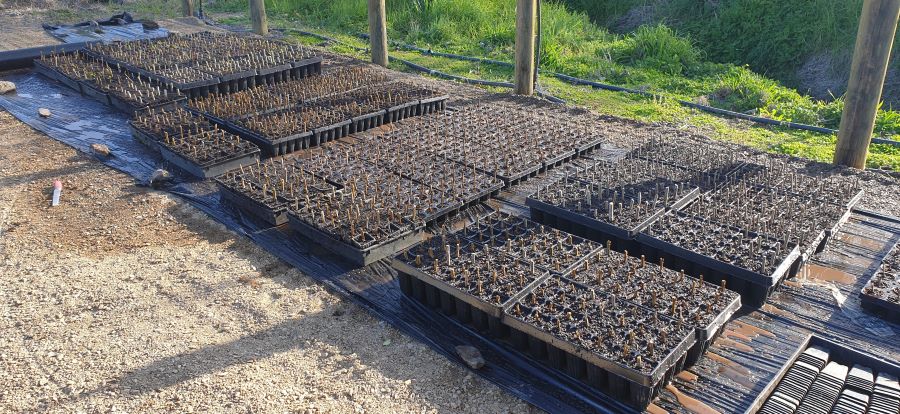
Composted, screened pine bark was used for potting media and a slow release topdress fertiliser (PlantoSan) was used twice during the growing season (late August and mid-December). Pots were filled, pressed in by hand, filled then pressed again so the potting mix was fairly firm in the pot and filled to the top.
Cuttings were set directly in the pots during late winter (August) to produce plants that would be dispatched the following winter. Cuttings were taken from 1-year vigorous material with one good bud at the top of each cutting. These averaged 5cm length, customised to the pot depth. The cuttings were pushed into the centre of the filled pot, leaving one bud and approximately 2-3cm of stem exposed. The second bud was broken off so only one bud was exposed above the soil.
Trays of plants were lined out on black polythene placed over rolled compacted brown rock. The purpose of the polythene was to contain the poplar roots to the pots and media.
The nursery site was exposed to full sun and wind, with no shade cloth or shelter cloth. The site has only moderate exposure to wind.
Two methods were used for mid-season grading of trees. Where propagated in individual pots, trees were graded by hand into three grades (large, medium and small). Trees grown in fixed trays were topped to approximately half their height using a hedge trimmer in December.
Topdress slow release fertiliser was applied by hand in August when the cuttings were planted, then again in mid-December. Where further dressings were necessary later in the growing season, small quantities of general purpose fertiliser were used (Ballance Yara Mila complex, NPKS 12 5 15 8).
Water was applied by overhead sprinklers twice daily (early morning and late afternoon).
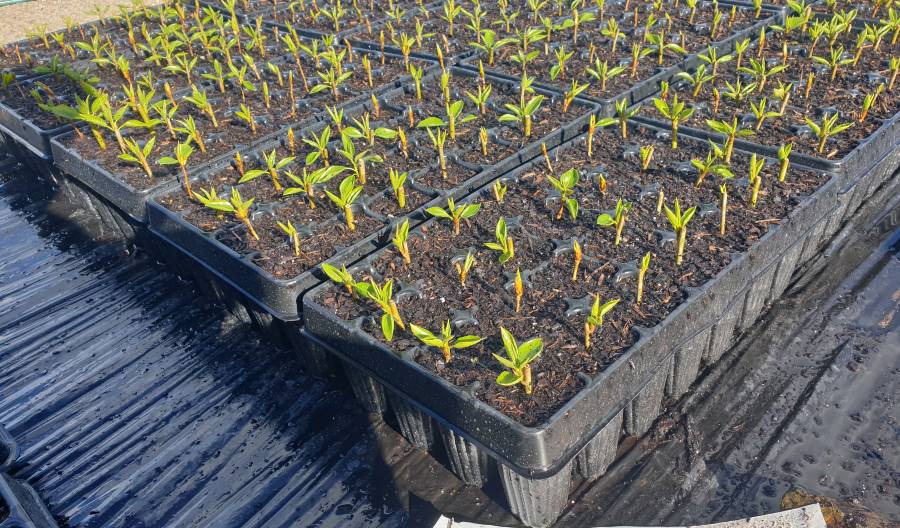
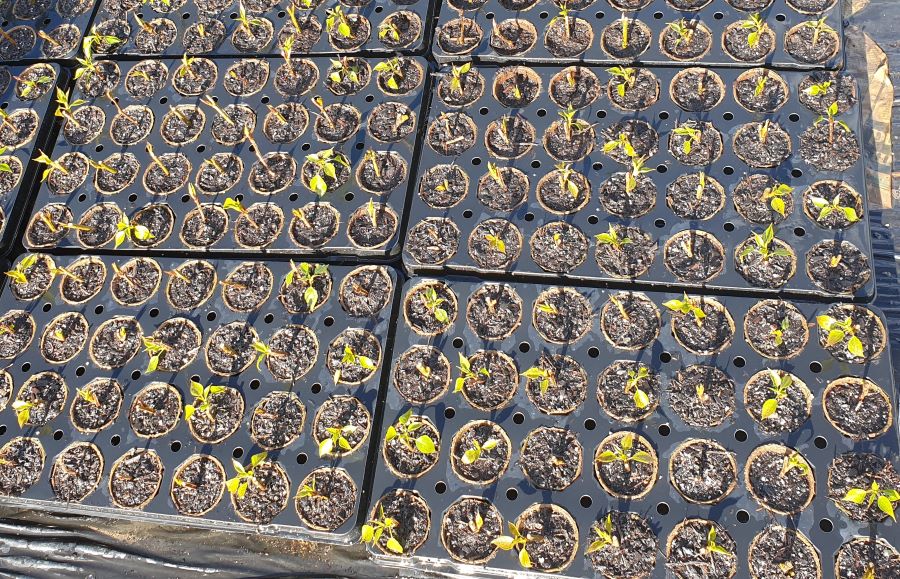
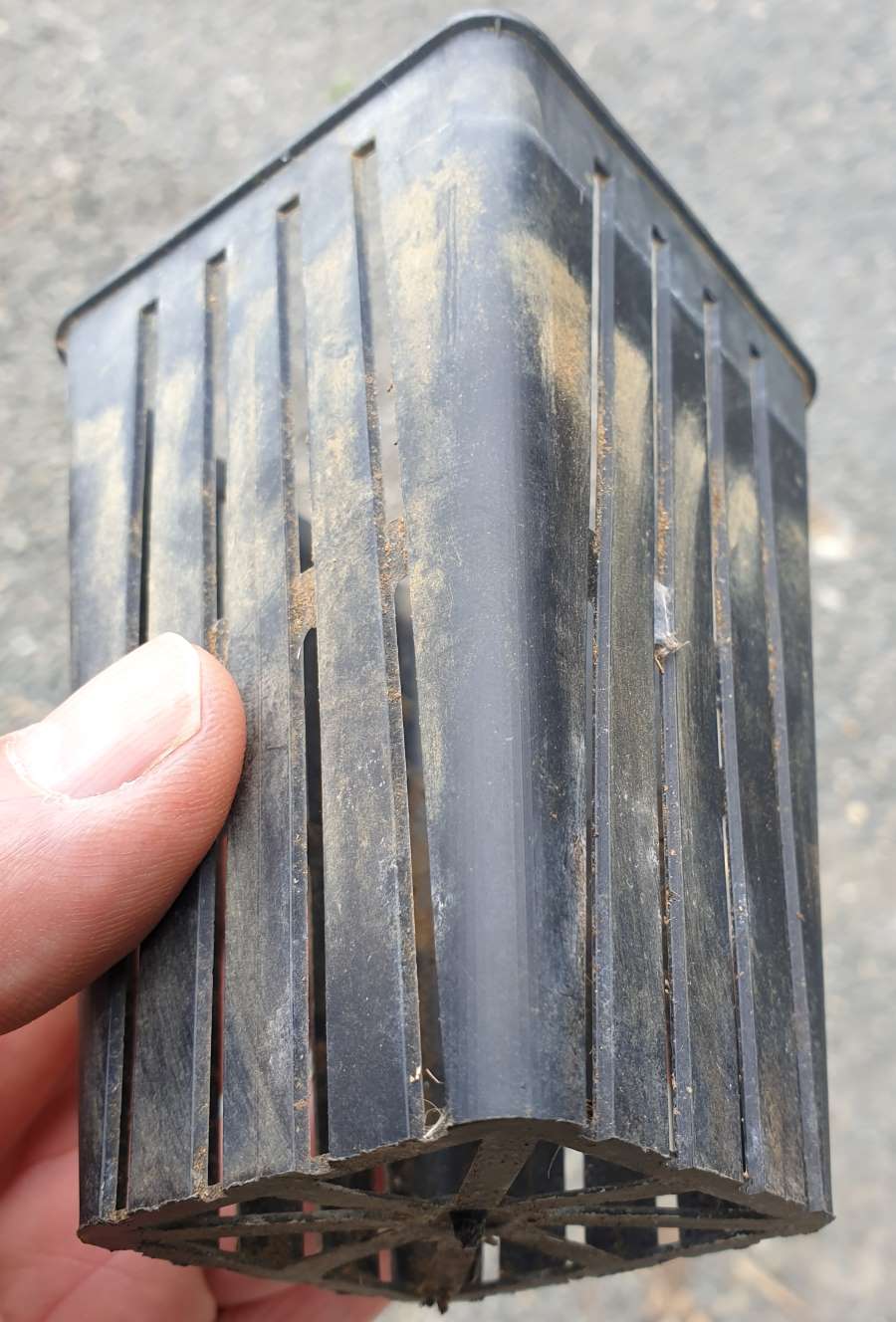
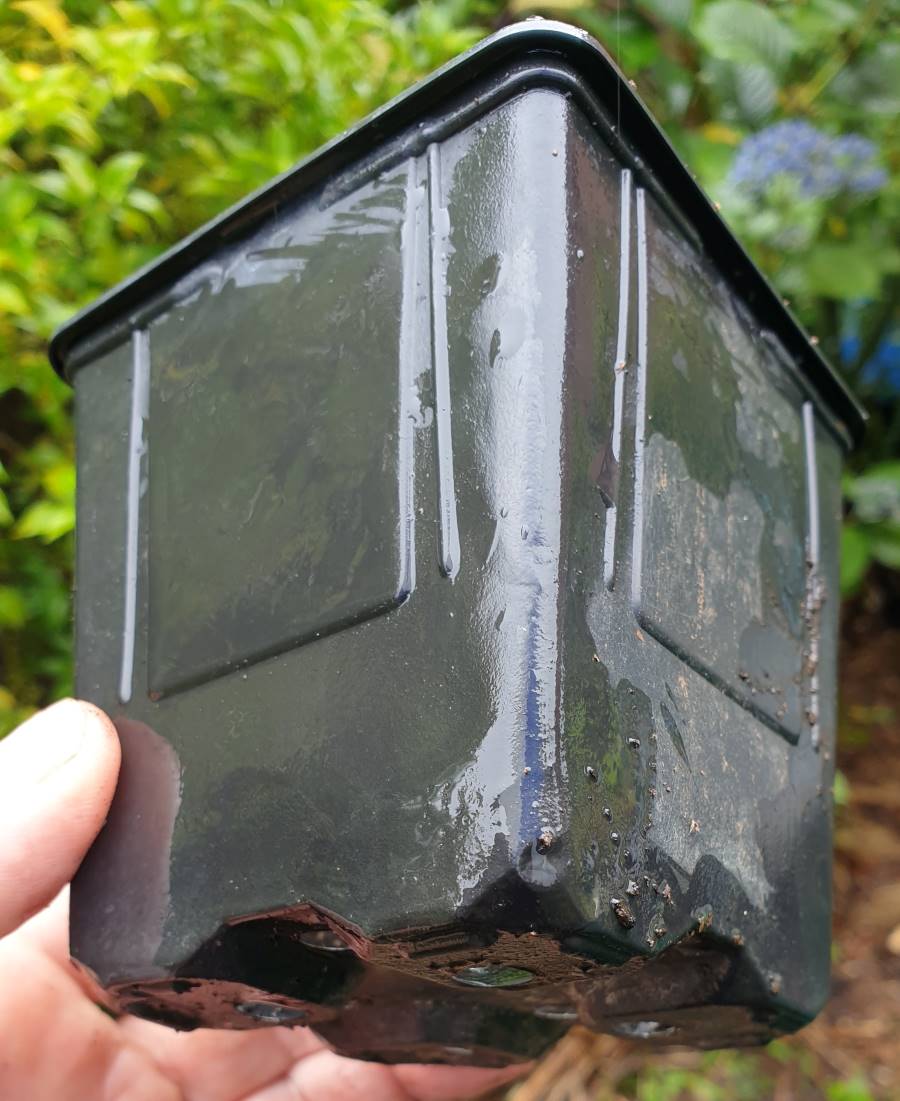
Results
The potting mix and fertiliser regime were very successful, and growth of trees was good and not excessive. Slow release top dress fertiliser only lasted six weeks so could be re-applied where necessary, allowing height growth to be controlled so that plants could be hardened off during the growing season. By mid-December the growth of trees had slowed, so reapplication was only necessary where growth was required.
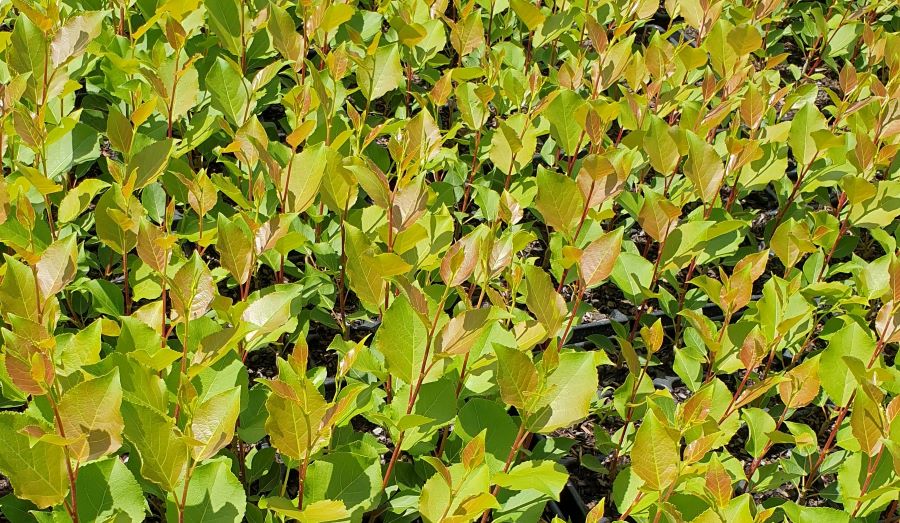
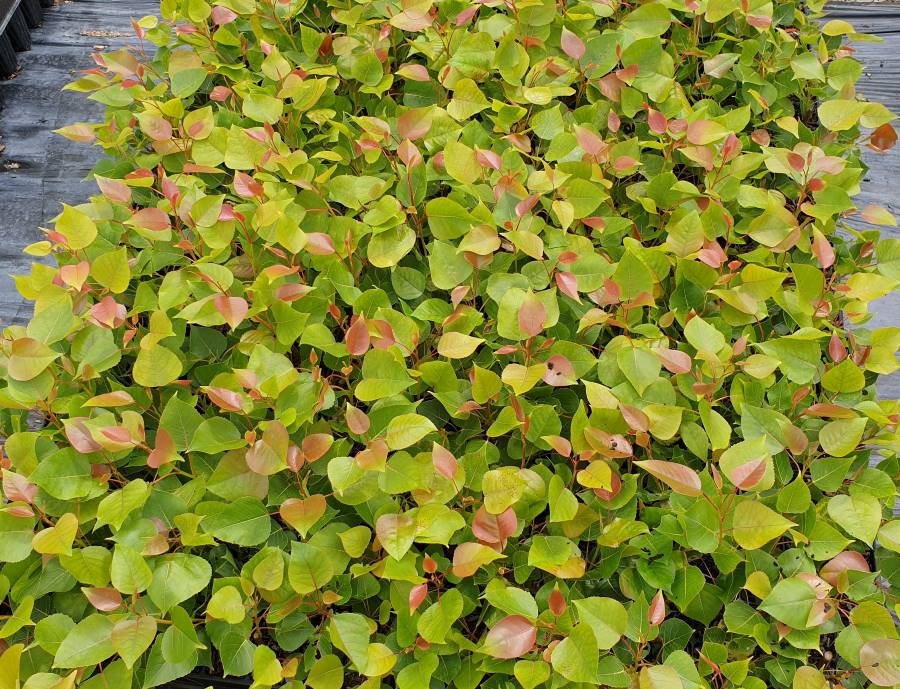
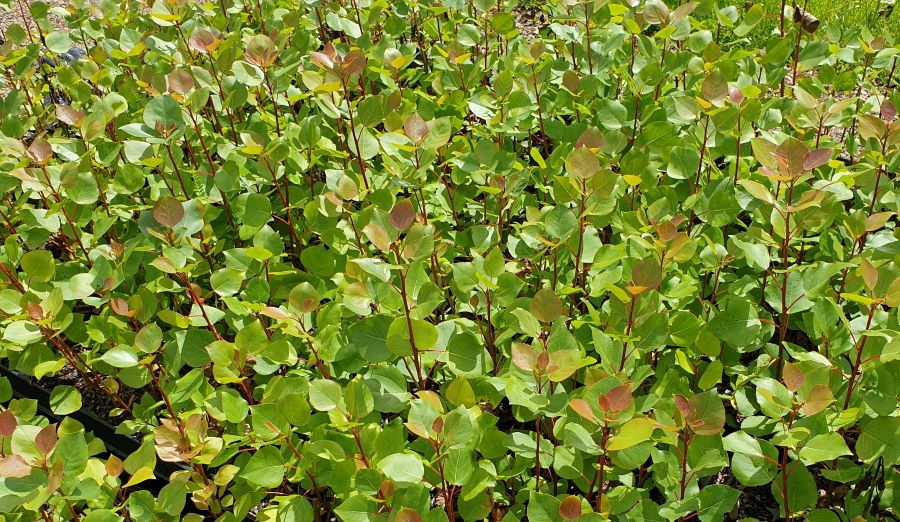
Two issues were encountered during the growing season, disease and uneven growth. Disease affected some cultivars much more than others, and uneven growth was successfully addressed by grading the trees (loose pots) and topping the trees once in late November for fixed cell trays.
Disease
Some cultivars were found to be far more susceptible to disease than others. Shinsei and Pecam were completely resistant to disease. Yeogi had considerable mortality during September and October, while the three P. trichocarpa hybrids had very high mortality rates through November and December. Kawa had no disease during October and November, but experienced some leaf dieback in December. Chiba had very few losses, but there were low levels of disease present in November. Rotorangi had some dieback.
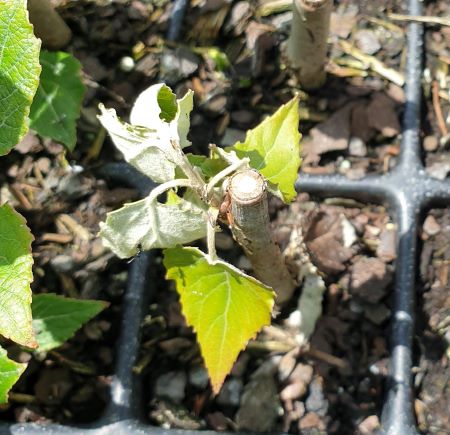
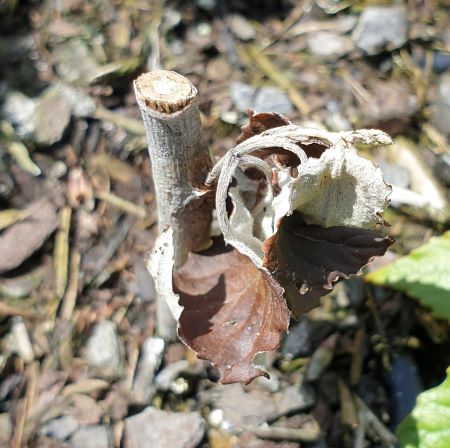
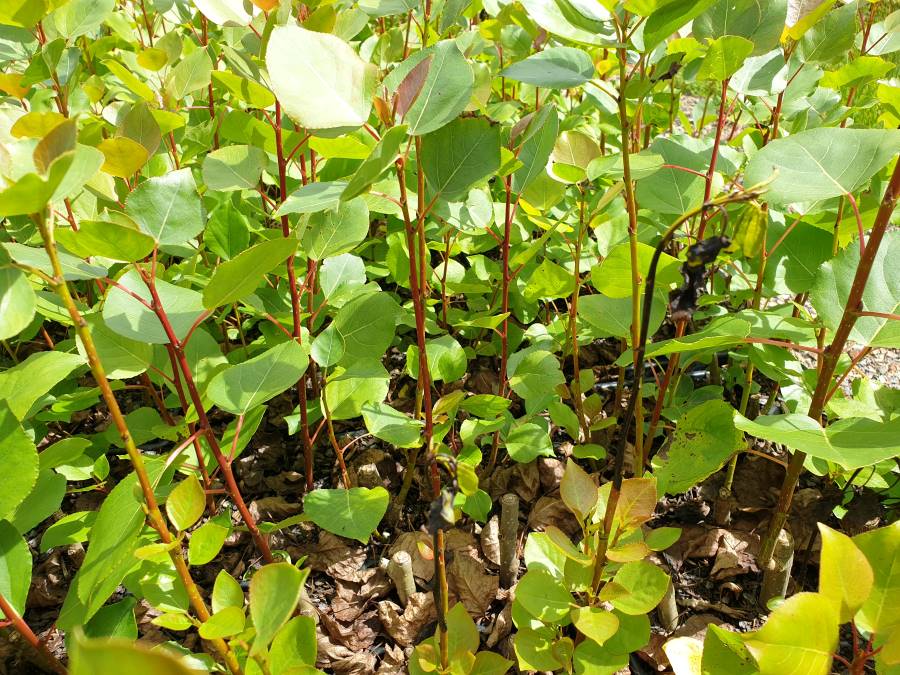
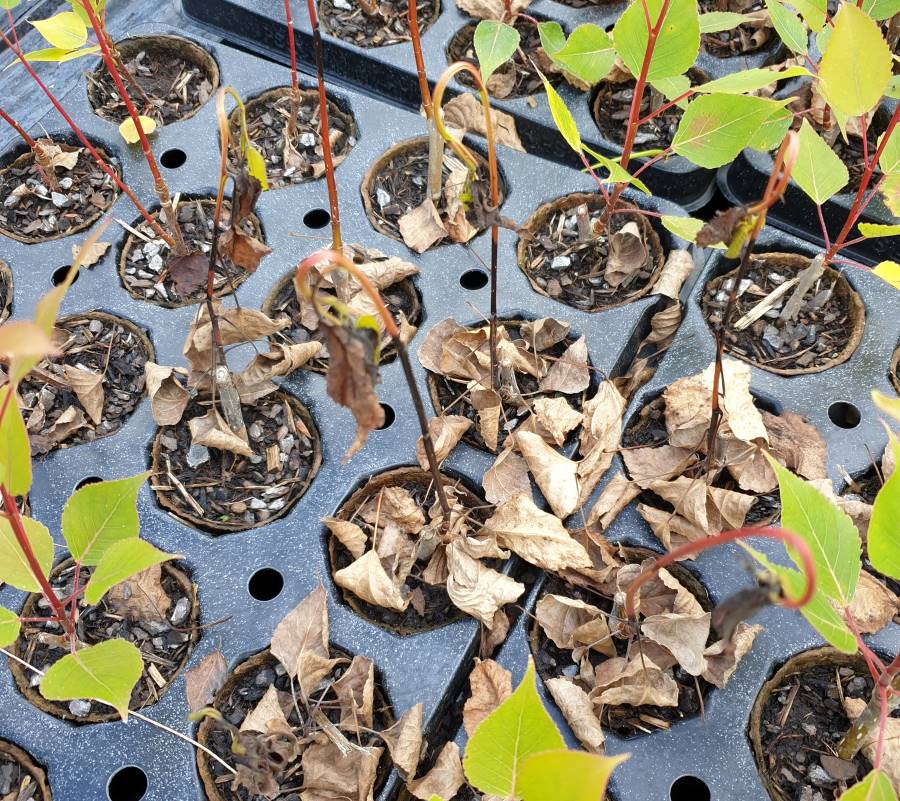
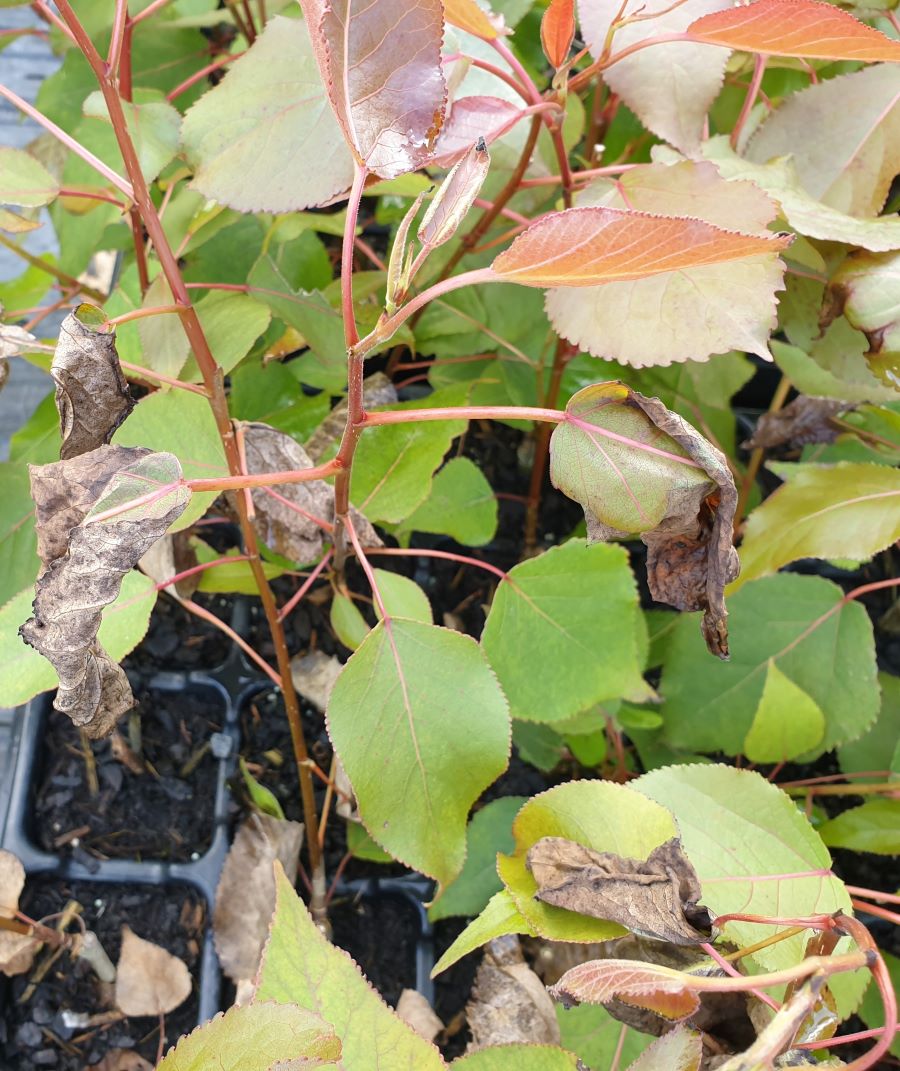
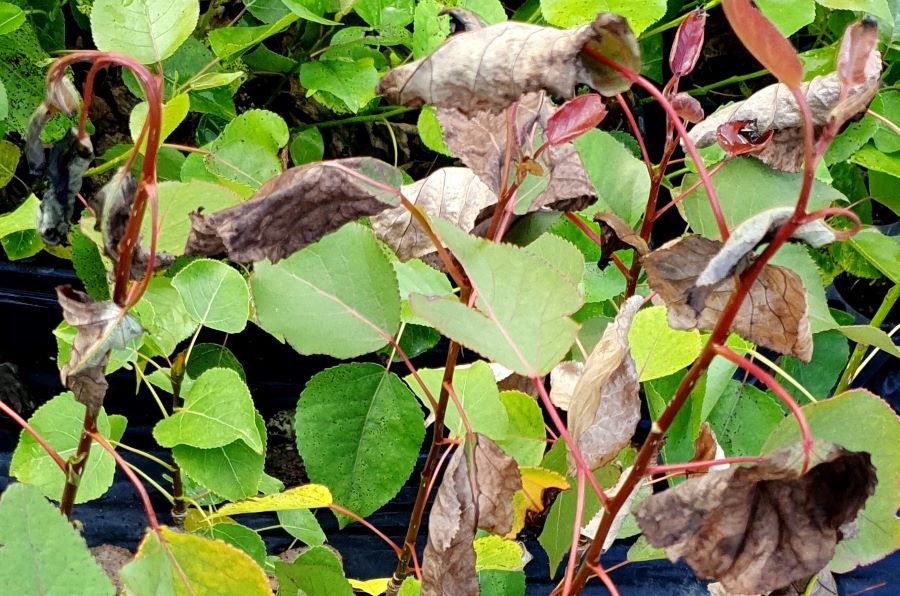
Uneven growth
Uneven growth was addressed successfully by using two methods.
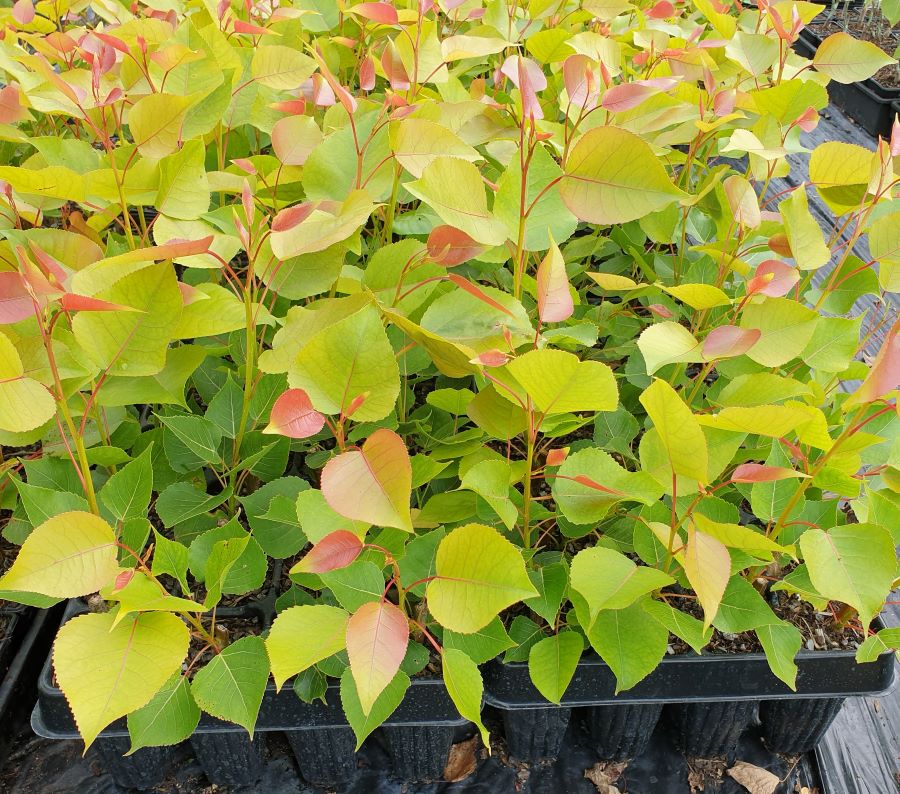
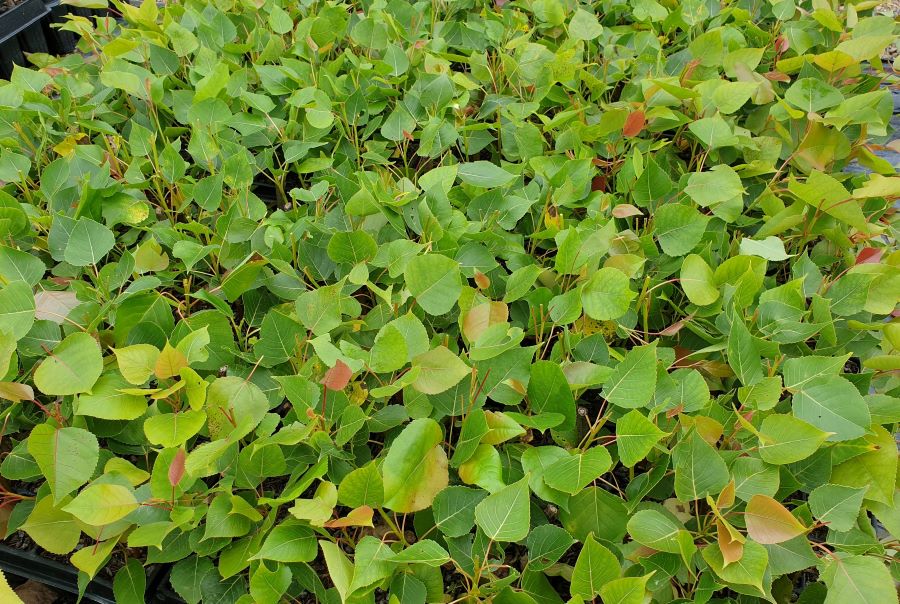
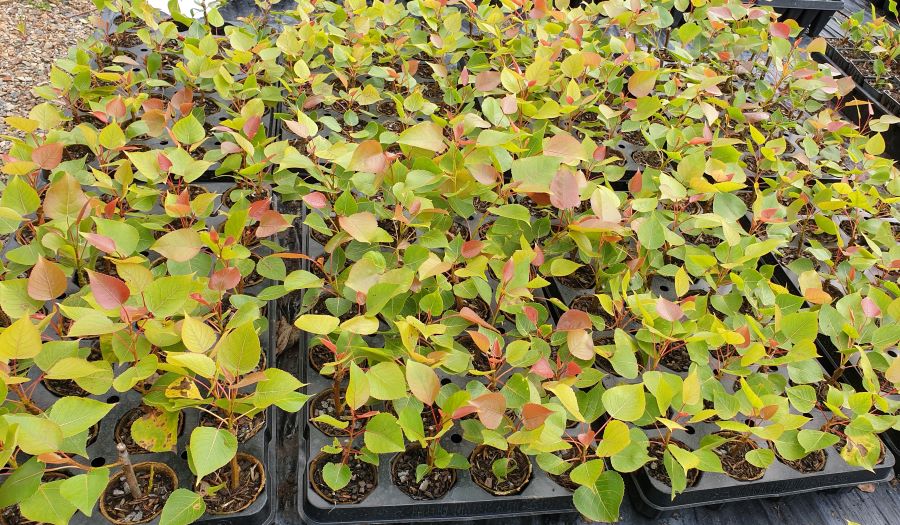
Pot types and root structure
Containers caused root distortion. Air-prune side-slot containers caused the least root distortion and generated good quality fibrous roots inside the container. Although root training pots had few circular winding roots present because the grooves directed the roots downwards vertically, they generated "root cages", i.e., what should be horizontal lateral roots became vertical tap roots. Because the peat pots were in fertilpot propagation trays, circular winding roots were prevalent in the bottom of the peat pot.
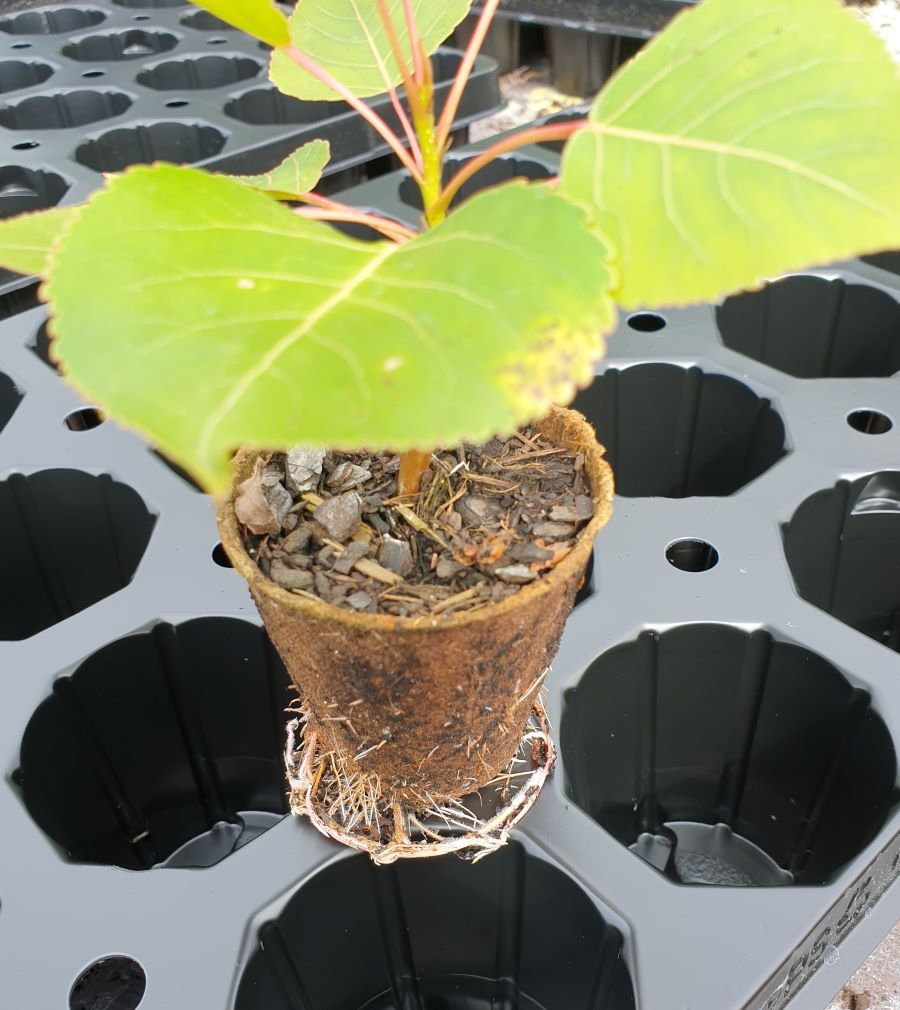
Discussion
A range of issues encountered in this trial could be overcome to produce high quality planting stock at low cost.
Disease issue
Disease in the nursery was likely to have been caused by excessive watering. Both bacterial canker/bacterial blast and poplar anthracnose thrive in humid and wet conditions.
Although this was an extremely wet spring and early summer, the same cultivars in this nursery trial when grown from pegs in the open ground nursery were all very healthy under the same conditions with the exception of overhead sprinklers. The sprinklers automatically came on twice every day regardless of the weather conditions. Although improved watering systems could overcome disease issues, the cultivars Pecam and Shinsei were completely free of disease, suggesting their hardiness to disease.
Uneven growth
Uneven growth is expected in container propagation, even for clonal stock. Of interest was whether a single topping would produce plants of the equivalent quality of graded plants, which is more time consuming and costly. Nursery production always aims for even-sized stock with few rejected because of inadequate size. Multiple trims are often practiced, but in this case a single trim appeared adequate, provided the topdress fertiliser was applied evenly and at the time of trimming. The graded trees also received topdress fertiliser at the time of grading, with a larger dose to smaller grades. This also worked, but was more time-consuming than topping.
Poplar is very fast growing and slow release fertiliser in the potting mix has been shown to cause excessive uncontrollable growth. By topdressing with fertiliser that lasts less than two months, the trees can be grown to the optimum size, at which point growth ceases as the food runs out. This method proved highly successful and was low cost.
Container types
None of the containers being trialled proved optimum, except the 7cm side slot tubes which are no longer available. These provided good air pruning and trees could be easily graded, being loose pots.
Side slot fixed cell trays that provide air pruning are typically used by forestry nurseries because these minimise root distortion and result in less windthrow of trees. These also provide very good air pruning at the base of the pot, but do need to be set up on benches so that air circulates under the pot to achieve adequate air pruning of roots. The cell trays with larger cells, for example with a cell volume of at least 275cc appear to be ideal for growing poplar, for example Transplant Systems TS-24F Seedling Tray.
Side slot forestry trays with equivalent cell volumes are available, for example 35-cell trays with 275 cc volume. Recommendation: Trial Lannen TS-24F Seedling Tray.
Bottomless trays for peat pots would produce less root distortion than the Fertilpot trays we trialled. Bottomless trays that have grooved sides are available for the 6cm peat pots we trialled, from Garden City Plastics in Australia. This system offers the ability to easily grade trees and because peat pots are robust and handle well without the soil plug disintegrating. In contrast, removing trees from their plastic containers (de-plugging), boxing them up, freighting and handling before planting can cause the "bare" root plug to easily rupture and disintegrate, reducing survival rates for trees. Another advantage with peat pot trays is the tree spacing within the tray, which provides a generous surface area suitable for producing robust trees that do not have to compete for light. Recommendation: Trial Garden City Plastics GCP J69704001 40 cell trays.
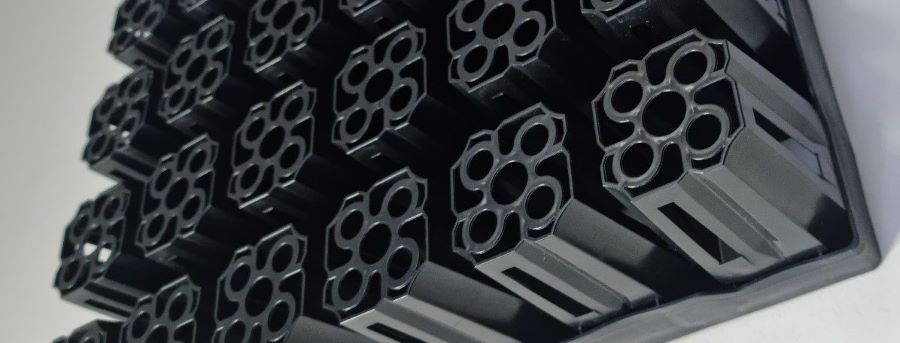
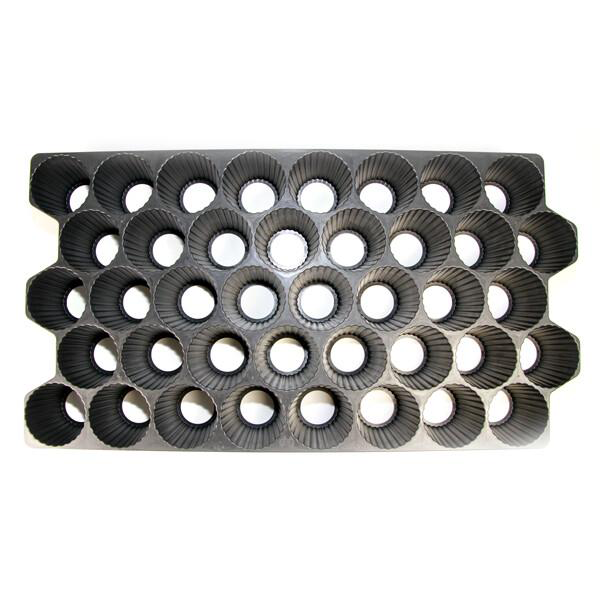
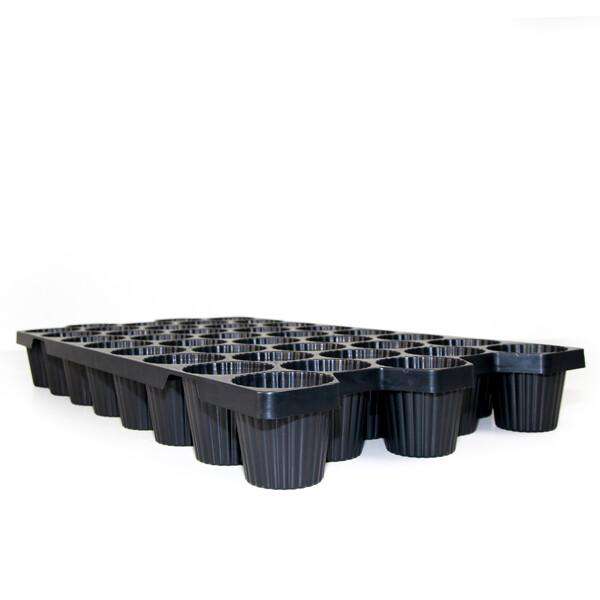
Square plastic pots and root-training pots don't produce a root system suitable for fast-growing species because of root distortion, winding or spiral roots and root cages that cause high levels of windthrow in the planted trees.
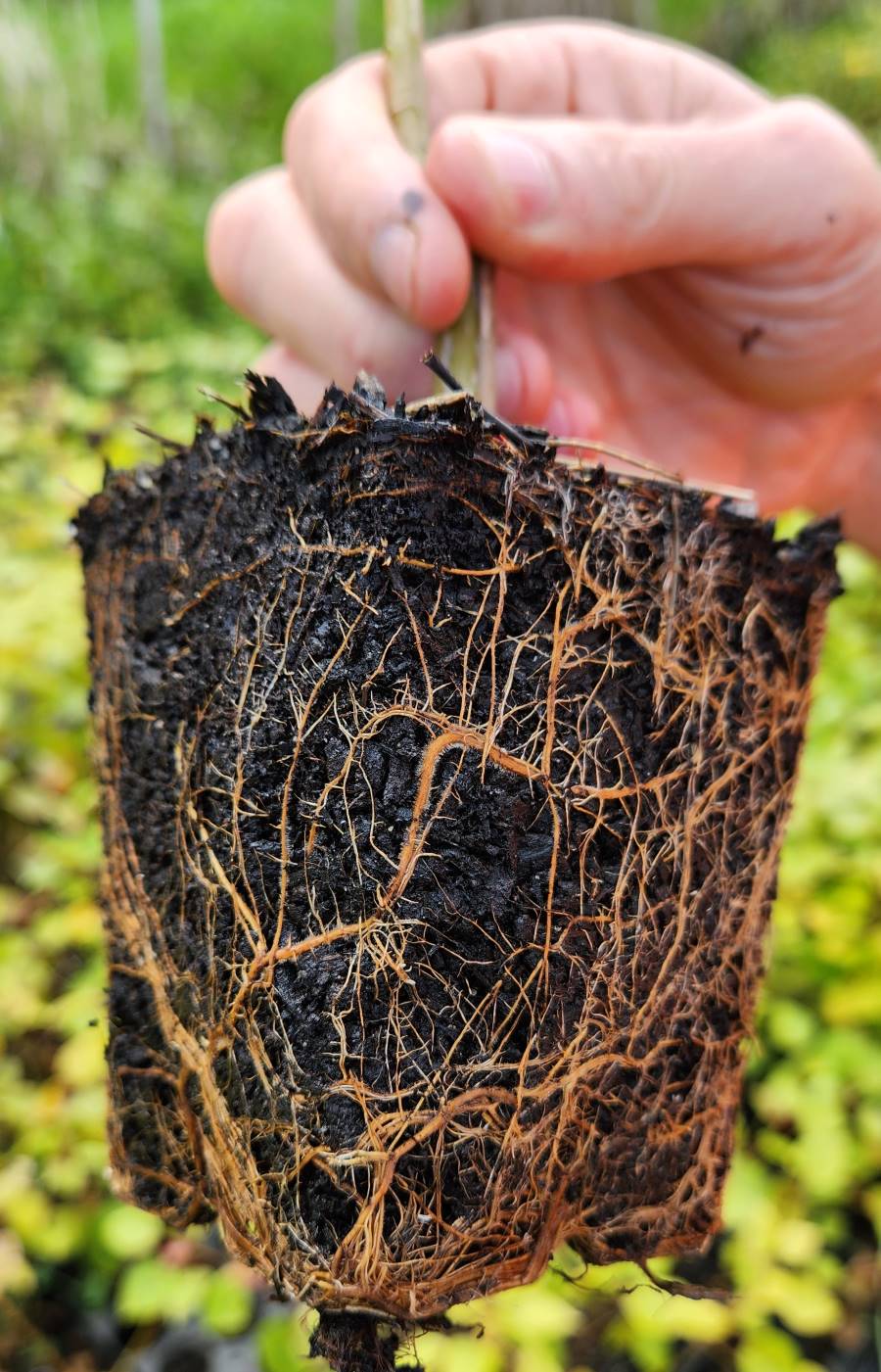
Winding root system in the half-litre square pot.
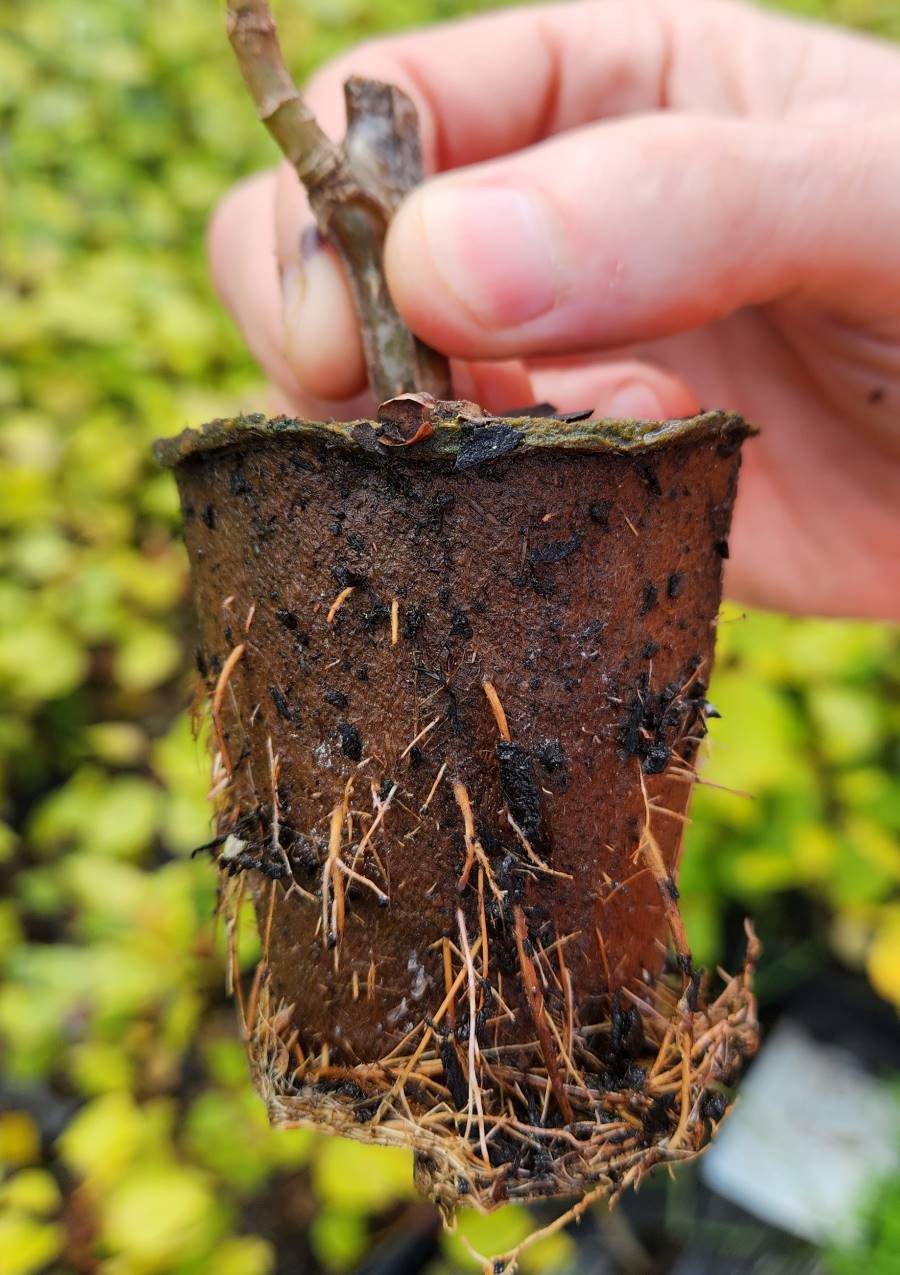
Peat pots produced a fibrous root system but the roots were winding in the bottom of the fertilpot 28 cell propagation trays.
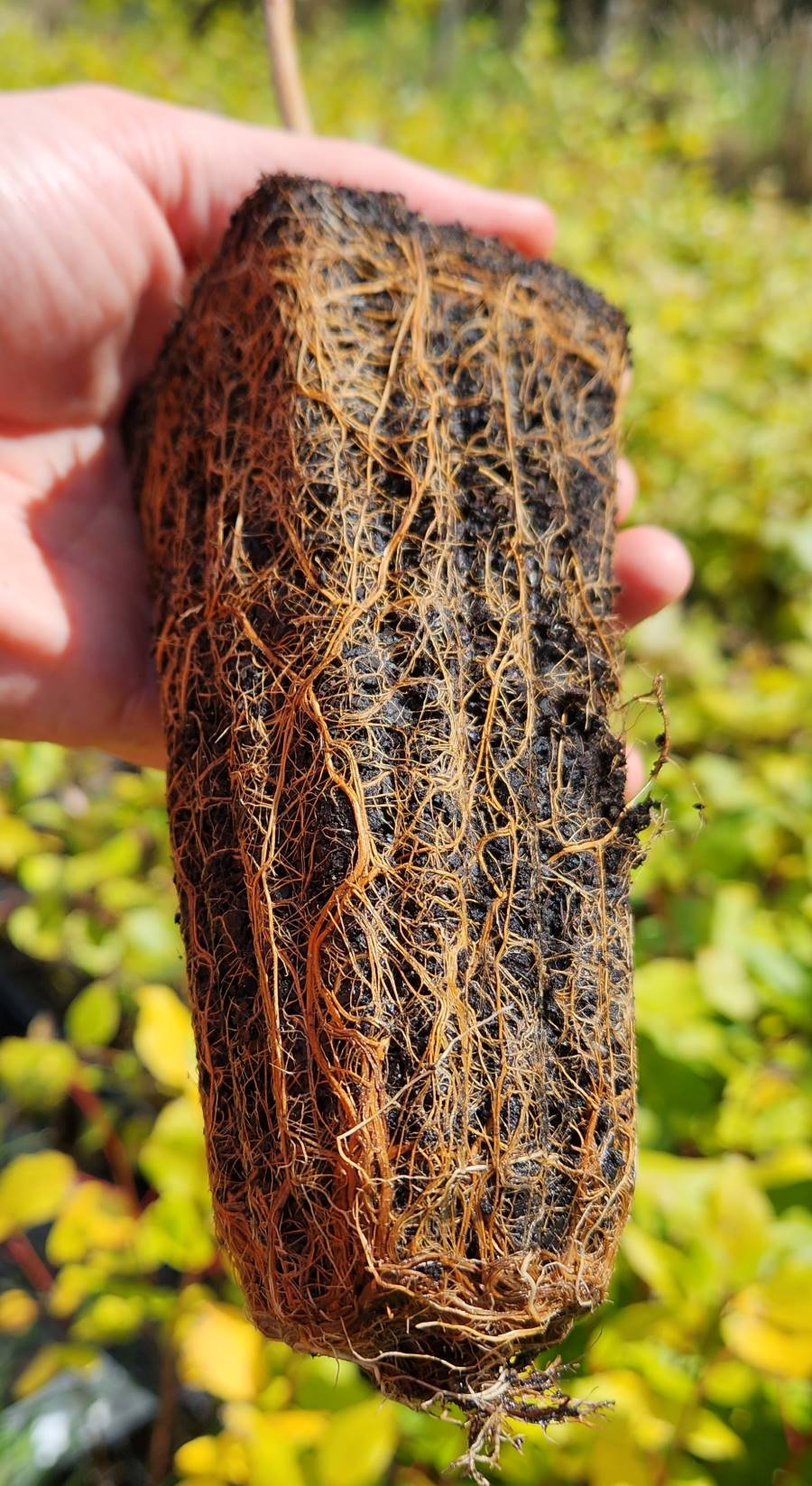
Root training tubes produced poor quality roots, that were winding and tangling in all directions and clumping at the bottom
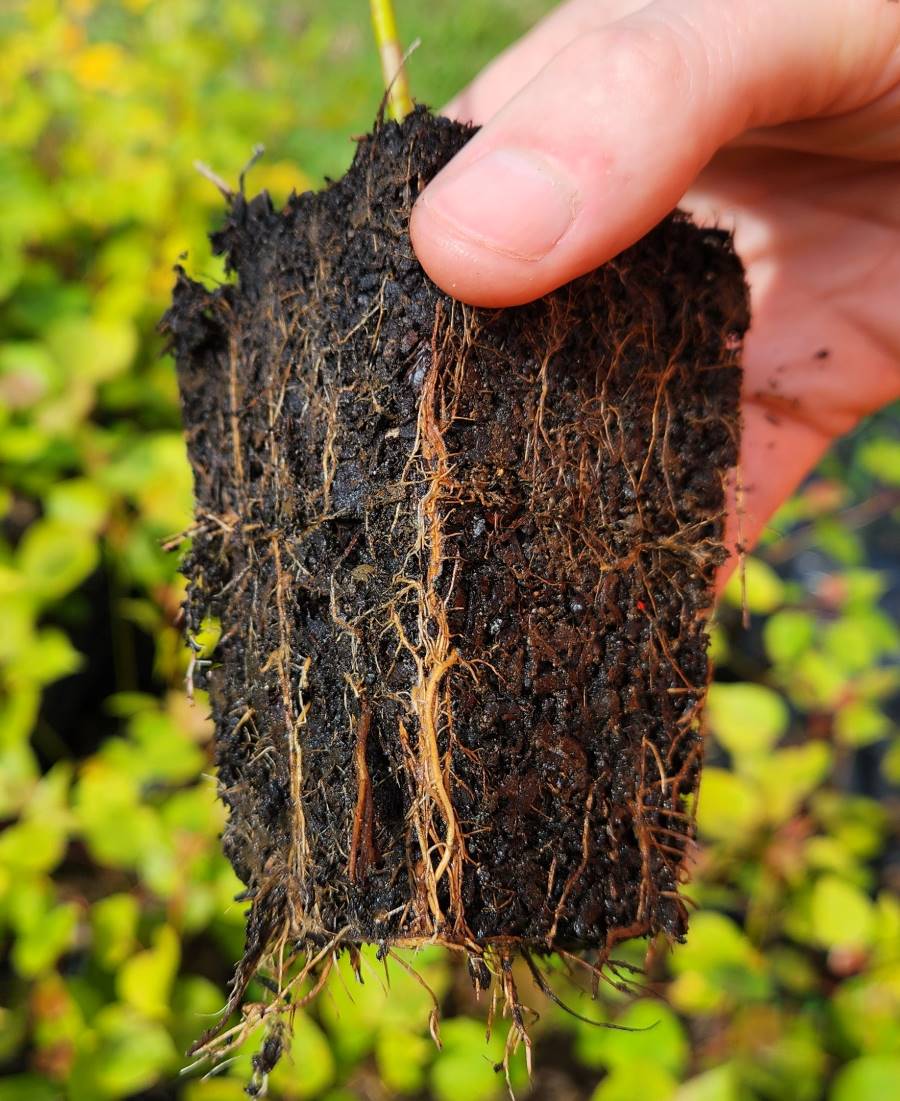
Lovely root system produced in 7cm side slot tubes, with very little root distortion
If half-litre side-slot pots were available, larger grades of trees could be container-grown without significant root distortion. Certainly the trees grown in half litre pots are of a size suitable for low levels of post-plant maintenance and would likely grow well in the first season after planting, but the root distortion in the square pots was at an unacceptable level. This would require remedying at the time of planting, by cutting the distorting roots back. However, air-pruning is much preferable, because of the fibrous root system produced that is free of winding roots - the tree requires no remedial work and is simply planted.
For smaller container sizes, less height growth was required to avoid producing tall, skinny trees. This was easily managed by withholding fertiliser at the right time to allow trees to run out of food, slow their growth and harden off. Where a "hit" of fertility was required to produce more growth for only a short period, general purpose fertiliser proved very useful.
Conclusions
Although further fine tuning is required for propagation methods suitable for producing quality containerised poplar, the methods used in this trial show promise for cost-efficient production from small single-bud cuttings. Shinsei and Pecam are very easy to grow and disease resistant and if nursery disease issues can be overcome via better control of overhead watering (or copper spray), other cultivars less resistant to nursery diseases could also be confidently grown cost-effectively at scale.
Northland Regional Council will continue to refine our containerised propagation methods and will conduct field trials of containerised trees to assess establishment of different sized planting stock. This will provide growers confidence in planting containerised poplar, to compliment the wands, stakes and poles currently being supplied to landowners by our Mata nursery.

 Farm Forestry New Zealand
Farm Forestry New Zealand